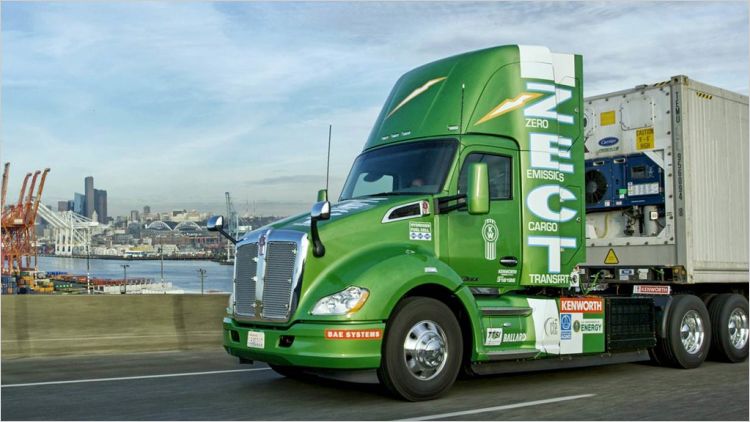
For hydrogen to help, not hinder, in the climate fight, we must be able to use it where fossil fuels currently dominate, such as transportation, heat and power, and heavy industry. Photo: TruckPR, Flickr (CC BY-NC-ND 2.0)
As Canada and the world look to achieve more ambitious climate targets, accelerating the transition from fossil fuels to lower-carbon and carbon-neutral energy sources is more important than ever. Today, hydrogen is increasingly being discussed as a promising fuel that could reduce the amount of fossil fuels burned in several sectors, such as transportation, buildings, and heavy industry.
However, the climate benefits of hydrogen are highly dependent on how it is produced. The carbon intensity associated with hydrogen ranges from extremely low when it’s made with renewable electricity to very high when it’s derived from fossil fuels. The best use of hydrogen is in hard-to-decarbonize sectors where electrification isn’t a good fit.
Today, more than 99 per cent of all hydrogen is “grey,” meaning it is produced from fossil fuels, usually natural gas, with no carbon capture and comes with a high carbon intensity. Together, “blue” hydrogen (made from gas with some carbon capture) and “green” hydrogen (derived from water with renewable electricity) compose less than one per cent.
The federal government’s Hydrogen Strategy for Canada identifies building a clean hydrogen economy as a strategic priority and has suggested an ambitious target for hydrogen to represent up to 30 per cent of Canada’s end-use energy by 2050. The big challenges include developing a supply of low-carbon hydrogen along with a system of standards and regulations that encourage its production and use.
For hydrogen to help, not hinder, in the climate fight, we must be able to use it where fossil fuels currently dominate, such as transportation, heat and power, and heavy industry. It has to be accessible, cost effective, easy to use, safe, and low-carbon.
However, hydrogen can’t just be substituted for natural gas, diesel, or gasoline in pipelines or at end use. Retrofits, new technologies, and new systems must be developed and installed to accommodate its chemical properties.
This will require the development of a broader market for hydrogen as a fuel — creating new jobs, new skills, and new products — and meaningful consultation and dialogue with stakeholders in business, industry, the environmental sector, all levels of government, and the public. Ensuring the public is supportive and comfortable with investment in and the transition to a hydrogen economy will be key to success.
The truth of the matter is that developing a hydrogen market is not a straight-line exercise. It involves transforming a system in place for more than a century. With that change comes opportunity and risk.
There is much work to be done to create a low-carbon hydrogen economy — from regulatory, standards, and technology points of view. For example, we need to increase the capacity for renewable electricity production and bring innovations to electrical grids and the regulations that govern them; define the threshold for low-carbon hydrogen and how fast it needs to be close to zero emissions on a life-cycle basis; and develop minimum standards for carbon capture rates for hydrogen derived from natural gas.
As we take aim at Canada’s 2030 and 2050 climate goals, hydrogen has a role to play in the energy mix, especially in hard-to-decarbonize sectors or areas where electrification is not an option. However, it is just one of many solutions we will need to implement on the path to net zero. The federal strategy is a good first step, but success will require strong co-operation and co-ordination between provinces and territories to ensure alignment with policies, regulations, policies, codes, and standards.
It’s worth re-emphasizing that hydrogen is only a climate solution if it is produced in a way that minimizes carbon pollution. This calls for an ambitious definition of low-carbon hydrogen, a standardized approach to measuring carbon intensity, and a regulatory framework to ensure the carbon intensity of hydrogen (over its life cycle) declines rapidly over time. Getting these pieces right is critical for hydrogen to live up to its potential in powering Canada’s economic future.
This article originally appeared on the blog of the University of Ottawa's Institute for Science, Society and Policy on February 18, 2021.
Tahra Jutt was the clean economy director for B.C. until 2021.



